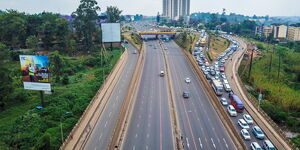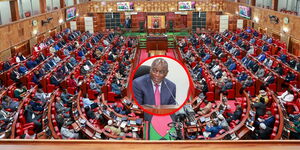The government has announced plans to revolutionise tax collection, shifting from manual collection to a digital system through the use of Artificial Intelligence (AI).
Speaking during a stakeholder engagement on Friday, October 31, the Presidential Council of Economic Advisors chairperson, David Ndii, announced the government's intention to use algorithms to enhance tax collection.
Ndii noted that the paradigm shift, that is expected to take shape in the next two years, was part of the broader strategy to expand the country's tax base and make revenue collection more efficient.
He revealed that the country's high penetration of digital finance, especially digital mobile money transactions, gave the government an advantage in implementing AI-powered tax systems.
"In a year or two, most of our taxes will be collected by algorithms and not by people. We are not planning to collect taxes the old way. We are going to collect taxes by algorithms," Ndii announced.
Ndii explained that traditional methods of collecting small taxes, particularly from the informal sector, had become impossible due to the high administrative burden.
"We are going to collect taxes by algorithms for two reasons: one is because of AI, the amount of computing power that you can now deploy to reduce transaction costs. Again, because it is a good fortune to have the highest penetration of digital finance in a country," Ndii stated.
Adding: "The challenge has been that you cannot collect small taxes manually because of the administrative burden since we have to do it the traditional way, but now we don't have to; we can now do it passively."
He further disclosed that President William Ruto's administration was in the process of leveraging on machine learning model that does tax assessment automatically.
During the forum, the president's advisor also announced that the Kenya Revenue Authority's (KRA) role would soon evolve from enforcement to systems management as technology takes over key functions of the agency.
Besides strengthening revenue collection, Ndii also announced the government's intention to restructure how Value Added Tax is distributed.
He noted that the current VAT system only favoured manufacturers. However, the government was in the process of changing the structure to favour consumers directly.
"So you are giving the benefit to a manufacturer with a view that they will pass it to the consumer. In so doing, you create a VAT refund, which is very problematic," he noted.
"Technology now allows us to give VAT refunds to consumers directly. For us to give you a tax credit, you must first be a taxpayer," Ndii added.












